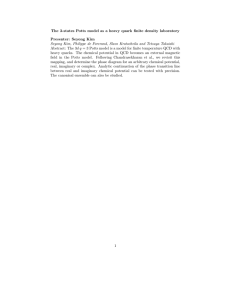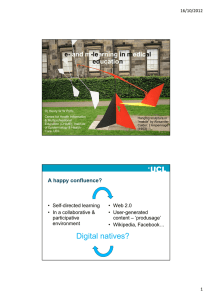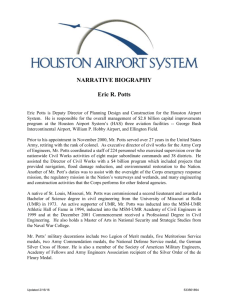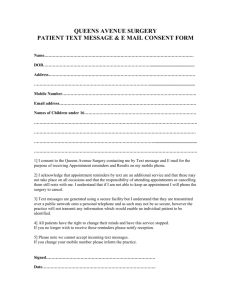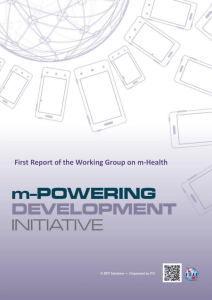G g For rds: R sing t
advertisement
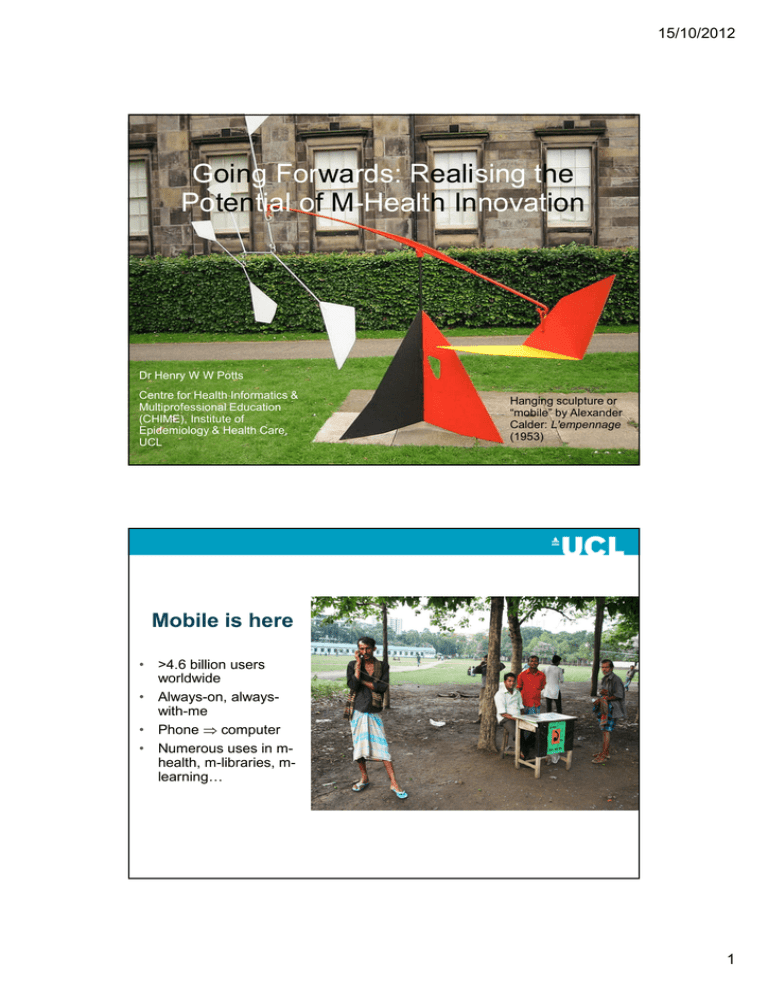
15/10/2012 Going Forwards: Realising the Potential of M-Health Innovation Dr Henry W W Potts Centre for Health Informatics & Multiprofessional Education (CHIME), Institute of Epidemiology & Health Care, UCL Hanging sculpture or “mobile” by Alexander Calder: L'empennage (1953) Mobile is here • >4.6 billion users worldwide • Always-on, alwayswith-me • Phone computer • Numerous uses in mhealth, m-libraries, mlearning… 1 15/10/2012 Good morning. Remember you have an appointment at the clinic this afternoon. To cancel or change the appointment, ring 020 7288 3383. Appointment reminders Appointment reminders • 22 million missed appointments in the NHS per year, costing ~£790 million • SMS (text) reminders widely used outside medicine, from hairdressers to vets • SMS reminders reduce non-attendance rates between 6-38% in RCTs • SMS reminders demonstrated to be cost-effective • Need to be integrated into booking systems 2 15/10/2012 STOMP Quiz: how long doz it tk 4 nicotne 2 leave yr body? 2dys, 2wks or 2yrs – we will snd u th answer later today! Behaviour change Example from Rodgers et al. (2005), Tob Control 14: 255-61 Behaviour change • More intensive than a single reminder • Proven to work – Smoking cessation: 1.7-2.4 times higher likelihood of giving up smoking – Medication adherence: 11%-23% improvements – Long-term conditions: various trials showing improvements for diabetes 3 15/10/2012 M2M (machine to machine) M2M (machine to machine) • Direct messaging from home glucometer/ coagulometer/ sphygmomanometer • Patient-reported outcomes on hospital wards (with a cheap, easy-to-clean, droppable device) • Emergency alerting systems Dr Foster’s Patient Experience Tracker 4 15/10/2012 Personal health records PHRs: personal health records • Electronic health record controlled by the patient, or with patient access • Patient’s mobile phone acts as an additional way of accessing the PHR 5 15/10/2012 And the future…? Devices attached to the mobile phone — eSTI2 receives £4M grant And… • Mobile computerised Cognitive-Behaviour Therapy • Epidemiology • M-learning • … 6 15/10/2012 Y r u obsessed w apps? :-) • Don’t overlook SMS (text) & interactive voice response • Near universal coverage; no fragmentation • UK – 62M population, 82M mobile phone subscriptions, 25M smartphones, 40% smartphone penetration • India – 1220M population, 973M mobile phone subscriptions, 33M smartphones, 3% smartphone penetration “Utopia is that which is in contradiction with reality” – Albert Camus • So many promises have been made for technology that were not delivered – Choose & Book (Green et al., BMC Med Informatics Dec Mak 2008, 8, 36) – Connecting for Health (Greenhalgh et al., BMJ 2010, 340, c3111) • Problems scaling up m-health systems • M-health still dominated by technology ‘push’ rather than clinician ‘pull’ • Proprietary, commercial systems under-delivering 7 15/10/2012 But remember the 1880s… • We got used to (fixed) phones! – The Lancet warns that if patients can telephone and converse with their doctors “for a penny, they will be apt to abuse the privilege” (1883); to diagnose by telephone rather than in person is “not in accord with the true ideal of professional duty” (1887) • What we need from m-health now is… – Scalability – Interoperability – Clinically reassuring Principles to support technology innovation? Involve users in design Allow co-evolution of technology and usage Recognise issues with top-down and bottom-up approaches (middle-out?) Address the complexity of work practices Address organisational issues Get the infrastructure right Technology push v. user pull In electronic health records: Greenhalgh, Potts et al., Milbank Quarterly 2009, 87(4):729-88 “if you think IT is the solution to your problem, then you don't understand IT, and you don't understand your problem either.” Roger Needham, CBE 8 15/10/2012 To make systems work, you need buy-in from staff: how will the system benefit them? Don’t just think at the top level: how can each ward/GP surgery/district nurse use it? Adoption of technology is a fluid and contingent process of change, entailing a co-evolution of work practices and the technology, where each adapts to the other Marc Berg talks of “growing” rather than building IT systems and working to achieve synergy among three fundamental (re)design tasks: technical system, primary work process (e.g. clinical care) and secondary work process (e.g. audit) Manager: Let’s outsource the appointment reminder system. It will be easier to commission and no extra workload for our staff. 9 15/10/2012 Patient: I didn’t get a reminder, so I thought my appointment had been cancelled… Receptionist: We don’t control that system. I don’t know how it works. Make it easy-to-use 10 15/10/2012 Money • Unlike Internet, most mobile activities have to be paid for • What does the end user pay? What does the institution pay? • Individual SMS are exceedingly cheap Operators want volume Considerable interest in health sector from mobile sector Many health services do not deliver volume, so we have to think in terms of aggregating … but don’t be surprised if they all withdraw again! Go for generic tools Often the simplest tools – access to e-mail, maps – are the most useful 11 15/10/2012 “The future of cellular telephony is to make people’s lives better – the most important way, in my view, will be the opportunity to revolutionise healthcare.” Martin Cooper, inventor of the mobile phone Thank you Dr Henry Potts: h.potts@ucl.ac.uk Bibliography • Green J, McDowall Z, Potts HWW (2008). Does Choose & Book fail to deliver the expected choice to patients? A survey of patient’s experience of outpatient appointment booking. BMC Medical Informatics & Decision Making, 8, 36. • Greenhalgh T, Potts HWW, Wong G, Bark P, Swinglehurst D (2009). Tensions and paradoxes in electronic patient record research: A systematic literature review using the meta-narrative method. Milbank Quarterly, 87(4), 729-88. • Greenhalgh T, Stramer K, Bratan T, Byrne E, Russell J, Potts HWW (2010). Adoption and non-adoption of a shared electronic summary care record in England: A mixed-method case study. BMJ, 340, c3111. 12 15/10/2012 Cite as: Potts HWW, “Going Forwards: Realising the Potential of M-Health Innovation”. At HealthTech NHS IT Strategy Forum, Warwick, UK, 3-4 Oct 2012. 13
